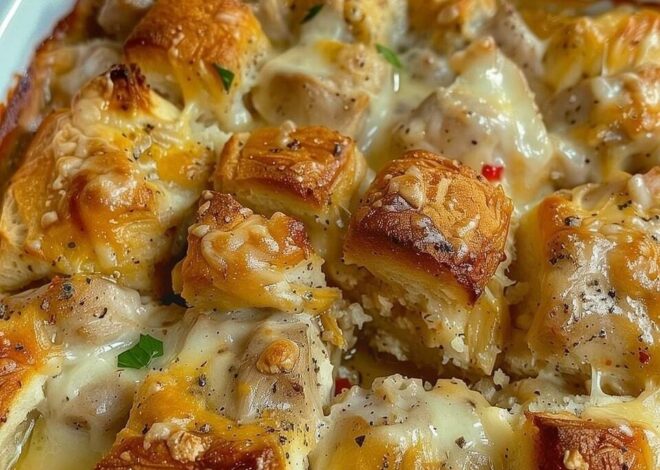
Traditional Turkish-Style Bread
Traditional Turkish-Style Bread (Ekmek): A Taste of Anatolia
Few foods carry as much heart as Turkish ekmek. In Turkey, bread isn’t just a side dish — it’s a daily ritual and a symbol of community, generosity, and care. From breakfast tables laden with olives and cheese to kebab feasts and humble home dinners, there’s always bread to share.
Authentic Turkish-style bread has a tender, slightly chewy interior wrapped in a golden, lightly crisp crust. Often dusted with sesame or nigella seeds, it’s perfect for tearing, dipping, and soaking up sauces. Baking it at home brings that comforting aroma of a Turkish bakery straight into your kitchen.
⏱ Preparation and Cooking Time
| Step | Time |
|---|---|
| Preparation (mixing and kneading) | 20–25 minutes |
| First Rise (proofing) | 1 to 1½ hours |
| Shaping and Second Rise | 45 minutes |
| Baking | 20–25 minutes |
| Cooling and resting | 15 minutes |
| Total Time: | ~2½ to 3 hours (mostly hands-off) |
Ingredients
For the Dough
- 4 cups (500 g) all-purpose or bread flour (plus extra for dusting)
- 1½ teaspoons salt
- 1 tablespoon sugar
- 2¼ teaspoons (1 packet) active dry yeast
- 1½ cups (360 ml) warm water (100–110°F / 38–43°C)
- 2 tablespoons olive oil (optional, for extra softness and flavor)
For the Glaze & Topping
- 1 egg yolk
- 2 tablespoons plain yogurt or milk
- 1 tablespoon water
- 1 tablespoon sesame or nigella seeds (optional but traditional)
You’ll Need
- Large mixing bowl
- Measuring cups and spoons
- Spatula or dough scraper
- Kitchen towel or plastic wrap
- Baking tray or stone
- Parchment paper
- Oven with top and bottom heat (or convection mode)
Step-by-Step Preparation
1. Wake Up the Yeast
Combine warm water, sugar, and yeast in a small bowl. Stir gently and let it rest for 10 minutes until frothy — that’s your sign the yeast is active.
If it doesn’t foam, start fresh with new yeast and slightly warmer water.
2. Mix the Dough
In a large bowl, mix flour and salt. Make a well in the center and pour in the yeast mixture (and olive oil, if using).
Using your hands or a sturdy spoon, stir until a sticky, shaggy dough forms. Turkish bread dough is soft and moist — don’t worry if it feels tacky; that’s what gives it its airy texture later.
3. Knead Until Smooth
Turn the dough out onto a lightly floured surface. Knead for 8–10 minutes, until smooth and elastic. Add small pinches of flour only if it’s too sticky to handle.
When you press a finger into the dough and it springs back slowly, you’ve reached the right texture.
4. Let It Rise
Place the dough in a lightly oiled bowl and cover it with a damp towel or plastic wrap. Leave it in a warm spot for about 1 to 1½ hours, or until it doubles in size.
If you’d like a deeper flavor, let it ferment slowly in the refrigerator overnight. This slow rise enhances the bread’s aroma and texture beautifully.
5. Shape the Loaves
Punch down the dough gently to release air. Turn it onto a floured surface and divide it into one large loaf or two medium ones.
Shape each piece into a round or oval form, tucking the edges under for a smooth finish. Place them on a parchment-lined baking tray, leaving space between for expansion.
6. Second Rise
Cover and let the shaped loaves rest for 30–45 minutes. They should puff up slightly — this final proofing is what gives the bread its soft, open crumb and satisfying lift in the oven.
7. Make the Glaze
Whisk together the egg yolk, yogurt (or milk), and water. This mixture adds a lovely shine and softness to the crust.
Brush it gently over the loaves, taking care not to deflate them.
8. Create the Signature Pattern
To make the classic diamond pattern:
Dip your fingertips in flour or water, then gently press diagonal lines across the dough. Repeat in the opposite direction to form a crisscross design.
This simple touch gives the bread its iconic look and helps it bake evenly.
9. Add the Seeds
Sprinkle sesame or nigella seeds generously on top. Nigella (çörek otu) adds an earthy aroma, while sesame gives a nutty, toasty finish.
10. Bake to Perfection
Preheat the oven to 425°F (220°C).
Place a shallow pan of hot water on the lower rack — the steam will help form that signature glossy crust.
Bake for 20–25 minutes, until the loaves turn deep golden brown and sound hollow when tapped underneath.
For a softer crust, brush the hot loaves with olive oil or butter as soon as they come out, then cover with a clean towel for about 10 minutes.
Serving Suggestions
- Breakfast (Kahvaltı): Enjoy warm with feta, olives, butter, honey, and jam.
- Lunch or Dinner: Ideal for mopping up sauces from kebabs, menemen, or lentil soup (mercimek çorbası).
- Street Food Style: Split open and fill with grilled meats, salad, and sauce for your own homemade dürüm.
- Tea Time: Tear into pieces and serve alongside a glass of strong black Turkish tea.
Storage & Reheating
- Room Temperature: Wrap cooled bread in a towel or airtight bag for up to 2 days.
- Reheat: Sprinkle lightly with water and warm in a 350°F (175°C) oven for 5–8 minutes.
- Freezing: Slice, wrap well, and freeze for up to 2 months. Thaw and reheat before serving — it’ll taste freshly baked again.
Tips for Success
- Choose Good Flour: Bread flour gives the best elasticity and chew.
- Keep It Warm: Dough rises best around 80°F (27°C).
- Use Steam: That’s the secret to the shiny crust.
- Don’t Skip the Pattern: It’s traditional and practical — helps with even baking.
- Handle Gently: After proofing, treat the dough softly to preserve air bubbles.
Cultural Note: Bread as a Symbol in Turkey
In Turkey, bread is sacred. It represents sustenance, respect, and gratitude. The saying “Ekmek parası” — literally “bread money” — means one’s livelihood. Throwing bread away is seen as disrespectful; instead, leftover pieces are saved for animals or birds.
When you bake ekmek at home, you’re not just making bread — you’re taking part in a tradition that’s been passed down for generations, from the Ottoman hearths to today’s family kitchens.
Final Thoughts
There’s something magical about pulling a warm Turkish loaf from the oven. The golden crust, the soft interior, the aroma that fills the air — it all captures the essence of Turkish hospitality.
Serve it with your favorite dishes, enjoy it plain with butter, or tear it apart with friends and family. Either way, this ekmek offers a genuine taste of Anatolia — humble, heartwarming, and unforgettable.
🥖 Nutrition Facts (Per Serving – 1/10 of a loaf)
| Nutrient | Amount |
|---|---|
| Calories | 190 kcal |
| Carbohydrates | 34 g |
| Protein | 6 g |
| Total Fat | 3.5 g |
| Saturated Fat | 0.7 g |
| Cholesterol | 15 mg |
| Sodium | 290 mg |
| Dietary Fiber | 1.5 g |
| Sugar | 1 g |
| Calcium | 20 mg |
| Iron | 2 mg |
| Potassium | 75 mg |
⚖️ Notes
- Low in sugar and moderate in protein, making it suitable for everyday meals.
- Using olive oil adds healthy fats and improves flavor.
- For a lighter version, replace half the flour with whole wheat flour to boost fiber content.
- Best enjoyed in moderation as part of a balanced diet — especially when paired with nutrient-rich foods like cheese, olives, or lentils.


